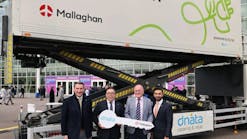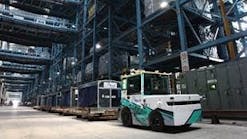CCS-UK Holds Successful ONE Record Trial for UK Industry
While much of the air cargo world continues to focus on recovering from COVID-19, and the UK prepares for Brexit, London Heathrow Airport’s air cargo community has successfully completed its first trial of IATA’s ONE Record technologies, which aim to replace the legacy Cargo-Imp and XML standards.
The vision for ONE Record is an end-to-end digital logistics and transport supply chain where data is easily and transparently exchanged in a digital ecosystem of air cargo stakeholders, communities and data platforms. Its objective is to address the main challenges of e-freight and unlock the possibilities of a full digital air cargo industry, creating opportunities for new value-added services and business models.
Working on behalf of CCS-UK, the operator of the UK’s air cargo community system, US application development and data management specialist Nexshore built a ONE Record server based in the UK, to control the storage and transmission of the ONE Record data objects which form the core of the new concept. The server was built to the latest ONE Record standards, but was also designed to support earlier versions. In addition, security to the latest IATA specifications was built into the CCS-UK platform.
The Heathrow project – led by community provider CCS-UK and its User Group – took place between March and July 2020, and involved forwarder Geodis and Cathay Pacific Cargo, and their respective IT systems providers WiseTech Global and GLS. Interfaces to the participants’ systems were provided by Nexshore. During the pilot, air waybill data was successfully exchanged between the parties and status updates provided.
Says Malcolm Fowler of the CCS-UK User Group: “We are delighted at how well this initial pilot has gone, but we need additional participants in order to test the system on a larger scale, under everyday working conditions and with higher traffic levels.
“ONE Record may not seem like the most important priority for the industry right now, but in fact there has never been a better time to adopt it. It delivers greater efficiency and potential cost savings, and low implementation costs. In addition, through the total transparency and uniformity it brings to the supply chain, it provides the kind of seamless data flows and visibility which shippers and consignees are demanding, and the traditional airfreight sector must provide, if it is to realise its full potential in the developing e-commerce boom.”





